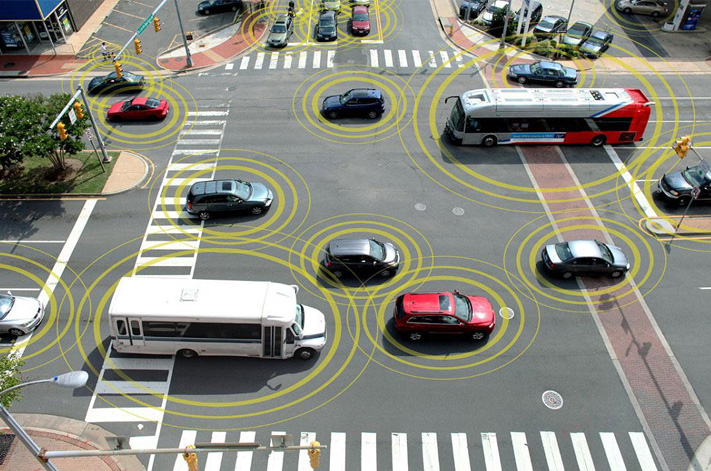
Volkswagen reckons it will soon have cars on our roads that can talk to each other and share information about how to beat traffic snarls.
While Volkswagen isn’t the first to use this technology – both German luxury brand Mercedes-Benz and premium US brand Cadillac have already rolled out similar vehicle-to-vehicle communications systems – it’s the first time it has featured in a mainstream car brand.
But what is vehicle-to-vehicle communication, and what does it mean for buyers who will one day see the acronym “V2V” or V2X” written on a car’s spec-sheet?
The basic idea behind V2V is for cars to share information they have sensed about the traffic around them with other cars. That information is sharing is via a short-range wireless system that doesn’t need to see the other car it is talking with. V2X, meanwhile, is all about cars talking to things on the side of the roads, such as traffic lights.

V2V and V2X are like a more autonomous version of Waze, the sat nav-based smartphone app that shares information about traffic jams, breakdowns, and collisions with other users. However, instead of using drivers to update the information, V2V and V2X do it automatically – and much faster.
Volkswagen claims its V2V system, due in 2019, will be able to warn other cars of immediate minor concerns, such as making an emergency stop, even before other drivers are aware of them happening. It can also send information about weather conditions, learned from tricks such as using the car’s sensors to detect black ice on winter roads.
While Volkswagen believes these features will be available at the V2V system’s launch, it may one day expand to allow emergency services to alert drivers of approaching emergency vehicles – even before they see the flashing lights in the rear-view mirror or hear the siren.
Other potential V2X applications include Audi’s Traffic Light Information system that the German luxury car maker premiered late last year, and that talks with traffic lights. Audi plans to use the system to help its cars ‘predict’ when the lights will turn green, telling the cars’ stop-start system when to shut the engine off, and when to fire it back up.
It’s all well and good to think about how this system will work – as well as to see early versions of the technology making its debut overseas – but there’s quite a way to go before this technology will work as seamlessly as car makers would like.
One of the problems facing V2V systems is critical mass – having enough cars on the road with the system enabled to validate its purpose and existence.
Did you know?
The V2X system rolled out in Cadillac’s CTS was developed by a small Australian software company called Cohda Wireless.
Cohda, based in Geelong, Victoria, developed the system to allow it to send as many as 1000 messages a second to cars within a 300-metre range.
The company says the system installed on the Cadillac CTS give it “360-degree” awareness of everything happening around it by collecting information from nearby cars and roadside infrastructure.



